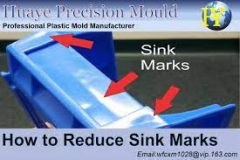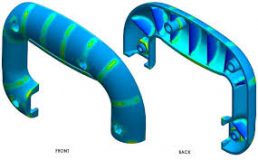Have you ever seen sink marks on your plastic parts after the molding process? Sink marks occur when the material in the plastic cools and shrinks faster than the surrounding area, causing a visible indentation on the surface of the part.
Sink marks are a common problem in plastic injection molding and can be caused by a variety of factors, such as uneven wall thickness, improper cooling, or insufficient packing pressure. But don’t worry, there are several methods you can use to fix sink marks and achieve high-quality plastic parts. Let’s dive into some possible solutions.
Sink Mark Causes
Do you ever look at your plastic parts and notice pesky sink marks? It’s like they’re mocking you, saying “Ha! You thought you had smooth and consistent molding, didn’t you?” Well, fear not because I have some insight into the cause of these sink marks. It can be anything from uneven cooling to poor gate placement. But don’t fret, because, with a little troubleshooting and tweaking, you’ll be able to banish those sink marks and show your plastic parts who’s boss.
Adjust injection molding parameters
Sink marks can be caused by improper packing pressure, so adjusting the injection molding parameters such as filling speed, packing time, and holding pressure can help reduce or eliminate sink marks. Increasing the packing pressure or extending the packing time can push the material back into the cavity, effectively filling the sink marks. However, be cautious not to over-pack the material, which could lead to other problems such as flash.
Increase material packing
Another way to fix sink marks is to increase the material packing in the affected area. This can be done by using an indentation or sink mark correction molding technology. The corrective method applies a higher pressure than the normal injection molding process. This results in filling up the depression, which is the sink mark, with additional material. The material packing pressure is higher than the molding pressure, which causes the sink mark to vanish.
Adjust design and tooling
One of the most common causes of sink marks in plastic injection molding is uneven wall thickness. If there is a variation in the wall thickness of the molded part, the thickness that shrinks more during the cooling process will create a sink mark. Adjusting the part design to create a more uniform wall thickness can help reduce or eliminate sink marks.
Additionally, modifying the cooling system or adjusting the mold temperature can reduce the difference in cooling rate and minimize sink marks.
Post-molding treatments
It is also possible to eliminate sink marks through post-molding treatments, which include machining or sanding the affected area. However, this approach may affect the part’s dimensional accuracy, appearance, and overall strength. Also, more time and expense are needed for post-molding treatments.
Modify the molding process
If the above methods fail to eliminate sink marks, you may need to modify the molding process. This could include changing the material used, altering the mold design, or changing the processing parameters to minimize sink mark defects.
Injection Molding Sink Mark Troubleshooting
Ah, the dreaded sink mark defect – the bane of injection molding existence. No one wants to see those unsightly craters on their final product. But fear not, fellow molders, for troubleshooting is here! Sink marks can occur due to a number of factors – from overpacking the mold to uneven cooling to improper gate design. So, roll up those sleeves and dive into the world of troubleshooting.
Maybe it’s time to adjust the hold time or mold temperature. Or perhaps a gate redesign is in order. Whatever the solution may be, conquering the sink mark defect will surely make for a happier and more successful injection molding experience.
Conclusion of Sink Mark Defect
Sink marks are a common challenge in the plastic injection molding process, and they can affect the appearance and structural integrity of the final product. However, there are several methods you can try to fix sink marks and achieve high-quality plastic parts.
These methods range from adjusting injection molding parameters, increasing material packing, modifying designs and tooling, post-molding treatments, and molding process modifications. By implementing these solutions, you can minimize the occurrence of sink marks and improve the quality of your plastic parts.
 Plastic Injection Mold Material Guide – Advantages & Applications Of 20 Common Injection Molding Materials
Plastic Injection Mold Material Guide – Advantages & Applications Of 20 Common Injection Molding Materials  How to Prevent Sink Mark Injection Molding – Part 1
How to Prevent Sink Mark Injection Molding – Part 1  10 Plastic Injection Processes – Advantages, Disadvantages, And Applications Of Plastic Injection
10 Plastic Injection Processes – Advantages, Disadvantages, And Applications Of Plastic Injection  How to Prevent Sink Mark Injection Molding – Part 2
How to Prevent Sink Mark Injection Molding – Part 2